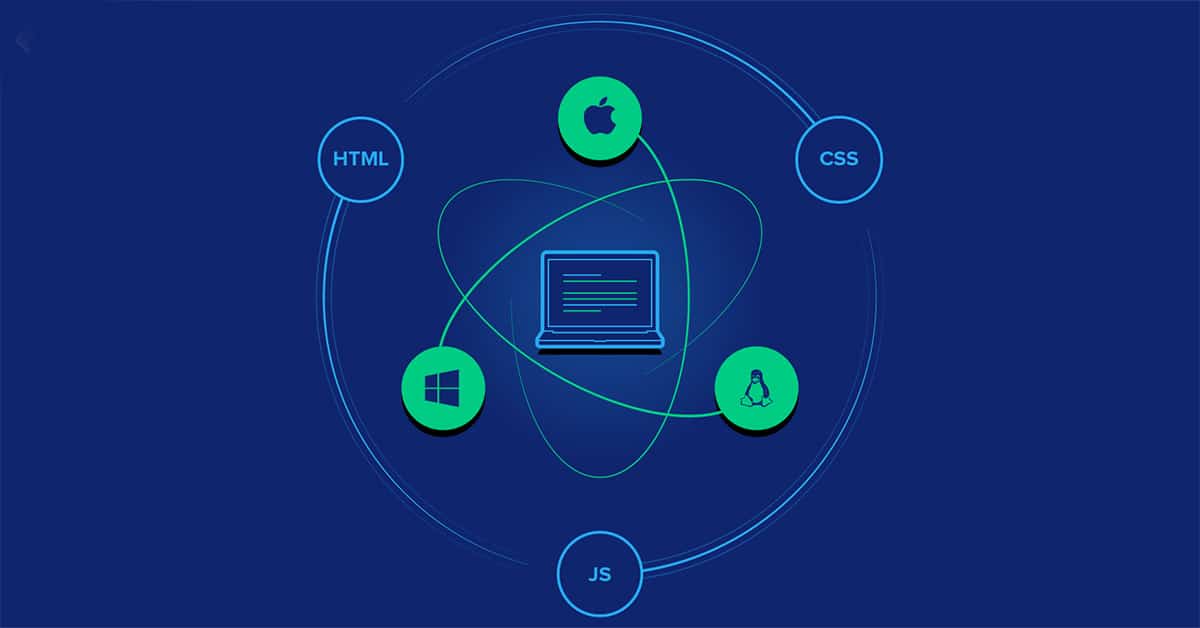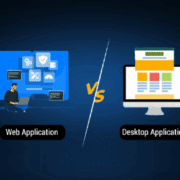Cross-Platform Desktop App Development Challenges in Application Development Using Different Frameworks
As a business owner ready to start your application development journey, you might be planning to provide your customers with a seamlessly connected experience through your application that works smoothly across different platforms.
Over other software development methodologies, cross platform desktop app development offers much better possibilities and potential for building a sophisticated, seamless, and secure application for different platforms.
However, developing such applications is not as easy as it seems to be.
Cross-platform app development presents significant challenges that require strategic solutions for successful development. These challenges might stop you from creating a seamlessly transcending app for every platform. Learning to anticipate and overcome these varied challenges is essential for developers.
This blog is all about cross platform desktop app development and the challenges it brings for modern businesses and app developers. We have also mentioned some effective strategies to overcome these challenges effectively.
Understanding Cross Platform Desktop App Development
Cross platform desktop app development is a software development methodology that utilizes a single codebase to build desktop applications that function seamlessly across different platforms or operating systems, such as Windows, MacOS, Linux, or any other, ensuring consistent user experience.
This one-time code generation process helps developers deploy applications quickly across several other platforms, saving them time, effort, and valuable resources. It also allows businesses to reach a larger user base by targeting multiple platforms simultaneously and offering similar features across all devices.
Major Challenges of Cross Platform Desktop App Development
Despite its numerous benefits of code reusability, faster time-to-market, and cost efficiency, the challenges in cross-platform application development have their fair share. There are a variety of pitfalls to developing cross-platform desktop applications that are faced by developers and businesses, with native integration, performance optimization, and compatibility at the top.
Let’s take a closer look at some of the most significant challenges that cross-platform development brings in application development:
Device Fragmentation
Device fragmentation refers to the varied types of devices being used today with different operating systems, screen sizes, and hardware capabilities. Increasing device fragmentation makes it difficult for developers to ensure consistent app performance and unified user experience across different devices.
Operating System Compatibility
Each operating system possesses its own distinct characteristics, encompassing a diverse range of APIs, programming languages, and design principles. These factors make it difficult to maintain platform compatibility during cross platform desktop app development. However, cross-platform frameworks offer effective solutions.
Design and UI/UX Consistency
Achieving a uniform user experience across several platforms is a significant problem in cross-platform development. Every platform follows distinct design guidelines and UI/UX principles. Hence, it is a challenge for developers to find a balance between platform-specific design elements and a cohesive user experience.
Performance Optimization
An essential element of successful cross platform desktop app development is ensuring optimal performance across all platforms. Due to the varying capabilities and limitations of different platforms, it becomes difficult for developers to optimize the performance of their applications across different platforms.
Codebase Maintenance
The most fundamental advantage of adopting cross platform app development is code reusability with having a single codebase for multiple platforms. However, having a common codebase needs strategic planning and well-defined organization. A large codebase also requires extensive maintenance and monitoring.
Platform-Specific Features
Despite the fact that cross-platform frameworks provide a unified development environment, there are situations when developers may need to include platform-specific features. Incorporating specific features of one platform in a cross-platform app may disturb its functionality on another platform.
Integration Complexity
When working with cross platform desktop app development, It can be difficult to integrate third-party services because it poses a challenge for compatibility. This becomes a major concern for businesses and app developers as different platforms are built in different ways, and the integration needs vary accordingly.
Ensuring Security
Cyberattacks and security threats have become common for every kind of software. Maintaining security with cross-platform desktop applications is always a struggle as these applications usually cater to a larger user base and deal with enormous volumes of data, making them more vulnerable to cyberattacks.
Sluggish Code
During the cross platform desktop app development process, developers employ cross-compliance, which may sometimes result in slow code or sluggish code. Such codes perform poorly, are often unresponsive, and lead to a frustrating user experience. Avoiding the creation of such codes is a challenge for businesses.
Poor Architectural Foundation
Nearly 70% of cross-platform app development projects fail due to a poorly designed architectural foundation. And, since there are so many teams involved in cross platform desktop app development, there is a solid requirement for building a strong architectural foundation for a successful cross-platform app development project.
Strategies to Overcome Cross Platform Desktop App Development Challenges
The challenges presented by cross platform app development are quite evident in today’s software development landscape. As these challenges can significantly hinder your projects, it is important to embrace them and implement effective solutions proactively to avoid them in later development stages.
Here are some effective strategies that businesses and developers can adopt to address the challenges associated with cross-platform app development:
Choose the Right Framework
Selecting a suitable cross-platform framework is crucial in cross platform desktop app development. You must evaluate frameworks based on factors such as performance, compatibility, and the ability to access platform-specific features.
Leverage Design Patterns
Utilizing sound design patterns can help mitigate platform-specific issues and promote code reusability. You can use these patterns to decouple components, facilitate testing, and promote maintainability across app platforms.
Focus on Platform-Specific Customizations
You can identify areas where platform-specific customization can be used to enhance user experience or leverage platform-specific capabilities. This solves the problem of platforms-specific features and helps you use most of them.
Rigorous Testing and Quality Assurance
Implement comprehensive testing strategies to validate application functionality, performance, and compatibility across different platforms and devices. Perform regular regression testing to identify and address platform-specific issues.
Prioritize Performance Optimization
Invest time in optimizing application performance across platforms by identifying performance issues, minimizing resource consumption, and leveraging platform-specific optimization techniques where applicable.
Regular Maintenance and Updates
Follow a proactive approach to application maintenance by addressing platform updates, security patches, and compatibility issues in a timely manner. Regularly update dependencies, libraries, and SDKs to address performance challenges.
Conclusion
Cross platform desktop app development is undoubtedly a transformative software development methodology that allows businesses to create seamless desktop applications that work consistently across multiple platforms. Although it offers significant benefits to developers like code reusability, the challenges it presents also remain unavoidable in your application development journey.
The most effective way to address these challenges is to recognize them in the first place and identify how they affect your application. By choosing the right framework, prioritizing performance optimization, rigorous testing, and employing other strategies, you can address these challenges effectively to create top-notch cross-platform desktop applications that ensure superior user experience.




